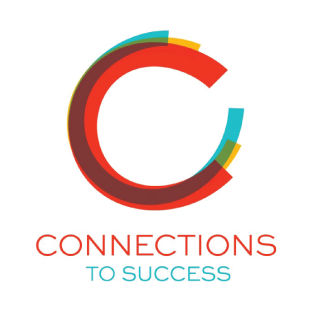Without a plan, your sales and marketing are costing you too much.
“Half the money I spend on advertising is wasted; the trouble is I don’t know which half.”
– John Wanamaker
 The face of marketing has changed forever. The 2000’s evolution of marketing saw marketing became a combination of precise, measurable science, effective strategy, automated technology, behavioral psychology, education combined with the artful execution that is attention-getting and engaging. If you can balance this science and art for your business, you will see excellent results.
The face of marketing has changed forever. The 2000’s evolution of marketing saw marketing became a combination of precise, measurable science, effective strategy, automated technology, behavioral psychology, education combined with the artful execution that is attention-getting and engaging. If you can balance this science and art for your business, you will see excellent results.
You can no longer rely on conclusions based on vague and imprecise assumptions like “we only advertise during the holidays and sales increase then so it must work only at that time.”
Nor can you define target audiences through rough segmentation, grouping large groups of people by demographics. It’s important to identify not only who the decision makers are, but also the influencers and internal obstacles they face. Then you can personalize and customize your messaging and delivery to individuals instead of rough hewn groupings who may have very little in common.
Attracting the right people, converting leads, closing the sale and delighting the customer is about setting objectives, designing strategies and implementing scientific, measurable tactics that maximize branding, sales and revenue.
How effective is your current marketing?
- Are your current efforts delivering exceptional results? Are you growing?
- Are sales and marketing working together, or at odds with each other?
- Are you using the “right” mix of tactics to reach all of your target audiences effectively and consistently?
- Is your budget sufficient to meet your overall business objectives or is your competition out spending you?
- Is your marketing moving forward or falling behind?
- Do you have a sales and marketing strategy, or just throwing tactics out randomly?
The Marketing Plan
The difference between a successful business and a struggling business is usually a detailed and strategic sales and marketing plan.
However, most marketing plan’s have a shorter lifespan than they used to in the past. This means that every business today, even slow-changing industries, have to adapt much faster than ever. So rather than help you develop a 5 year marketing plan, we show you how working in 90 day increments creates more effective results.
The Digital Marketing Plan
 As part of your overall marketing strategy, digital marketing provide unique advantages over traditional marketing.
As part of your overall marketing strategy, digital marketing provide unique advantages over traditional marketing.
- Results are much easier to measure
- Digital campaigns can reach an infinite audience at a better ROI.
- You can tailor digital campaigns to reach a variety of target audiences.
- Digital marketing is more interactive with your customers and prospects providing valuable consumer feedback.
- Digital marketing is more flexible and cost effectively allows messaging testing.
Businesses are spending more on digital advertising every year. In fact, total online spend is expected to reach $204 billion in 2018. This is because your customers spend more time online via computers and mobile devices, so digital advertising provides many targeting advantages over traditional advertising.
The Lead Generation Strategy.
While branding is important for your company, lead generation is the first step toward converting those marketing efforts into an actual sale.
Obviously, these days Lead Generation leverages digital channels. But these processes have undergone substantial changes in recent years with new online and social techniques. The myriad of information readily available online has led to the rise of the “self-directed buyer” so the emergence of new techniques to develop and qualify potential leads will continue to change at an exponential rate.
The buying process has changed meaning we have to find new ways to reach buyers and get heard through the noise. But the old marketing playbook is broken. Instead of finding customers with mass advertising and email blasts, we help you focus on being found and learn to build continuous relationships with buyers.
A common lead generation obstacle is what is known as “attention economics.” Social scientist Herbert Simon wrote “in an information-rich world, the wealth of information means a dearth of something else: a scarcity of whatever it is that information consumes. What information consumes is rather obvious: it consumes the attention of its recipients.”
This means your customers are overwhelmed with the abundance of noise so they are getting better and better at ignoring the messages they don’t want to hear and researching what they do want to learn about on their own.
This is where our Lead Generation Strategies are different. We show your marketing team how to effectively generate leads and your sales team to efficiently nurture those leads while minimizing the effects of attention economics. Again, developed all through what is most effective to meet the needs of YOUR customers as defined by your Customer Ecosystem™ Map.
Our Lead Generation Strategies also include training in our unique approach for stronger sales networking.
The Lead Nurturing Strategy.
Lead Nurturing is the process of developing relationships with buyers at every stage of the Purchase Funnel, and through every stage of your Customer’s Journey. It focuses your entire marketing efforts on delivering the information and answers your potential customers need.
- On average, half of the leads you uncover are not yet ready to buy (Marketo).
- Nearly 80% of new leads never become sales (MarketingSherpa).
- Companies that have a consistent process for lead nurturing actually generate 50% more leads at nearly a 33% lower cost (Marketo).
- A nurtured lead will make 47% larger purchases than non-nurtured leads (The Annuitas Group).
Sales people tend to focus their on the 3-5% of the leads they think will close most quickly, while virtually ignoring the remaining 95% of prospects in your CRM system. Not because of a lack of effort, but simply due to a lack of time. We help you create an automated nurturing process with a trackable lead scoring system to help overcome this challenge. Coupled with your Sales Enablement Strategy (see below), this creates a powerful relationship building machine.
The Sales Enablement Strategy.

Simply stated, a sales enablement is a strategic approach to providing your salespeople with content and coaching at the exact right time of your sales cycle. This strategy not only helps shorten the sales cycle, it also helps improve sales engagements and foster stronger client relationships from the very beginning.
The key to an effective Sales Enablement Strategy is the development of accurate insights about your target audiences as we do with our Customer Ecosystem™ Mapping and the development of a comprehensive Purchase Funnel Map™.
We approach the development of the Sales Enablement Strategy with four keys steps.
- Analyze your data on closed/won and closed/lost: If you ask your salespeople why they won or lost an account, you will get varying answers. You can’t build a strategy from this subjective data. Instead, we can help you log data in your CRM for a stronger, more objective analysis.
- Define and adapt your content medium: Is your sales content the most up-to-date? Is there a process for defining who is the gatekeeper of this information? Are you tracking the distribution?
- Position the content: If you utilize our Story Selling™ process, you know there are clearly defined steps to the sales process. And for each of these steps, there is specific content needed to help overcome objections or obstacles at every stage of the Purchase Funnel. We help you define that content needed and create a “cheat sheet” for sales reps to quickly find the information needed.
- Training: A Sales Enablement Strategy is only effective if it’s used. We make sure you have a process for managing and updating the content on your CRM and then training your sales team on how to use it.
- Set up a plan for ongoing improvement: Many times, we recommend using an online distribution/tracking system because it allows you to capture data about your sales stages and required content. We can help you establish this.
A combined sales and marketing plan is key.
Although the two terms are often used interchangeably, sales plans and marketing plans are not the same. Marketing plans are developed to identify your business’ target market, honing the messaging and creating strategies for message delivery to those customers. In contrast, your sales plan is used to detail the strategies your sales teams will leverage to sell products and services and increase revenue. So your sales plan forms part of your larger marketing strategy.
The benefits of a strong combined sales and marketing plan.
- Better ROI — marketing dollars go much farther
- Improved customer experience — resulting in lower marketing and sales costs
- Reduced management costs — sales teams spend less time chasing “new opportunities” and more time spent on business growth
- Stronger business intelligence — a better understanding of your competitors and your customers, to inform better decisions
- Higher profitability — positioning your company as a leader in your market
Our Process
Our planning process includes the following steps:
Voice of Customer Insights
Without accurate knowledge your customer’s needs, you risk wasting money and time messaging the wrong benefits to the wrong targets. While most businesses assume they know what their customers are seeking, we’ve found your sales and marketing is much more effective if you learn directly from the mouths of your customers. This way, your messaging is in the voice of the customer and relevant to their needs.
Planning
Next, we utilize the Customer’s Journey to identify the most relevant way to differentiate your business from your competitors. We can determine your purchase funnel to define your sales process; define (or refine) your company’s value proposition; and help develop processes that close customer experience performance gaps.
Implementation
Once the strategy is defined, we’ll develop 90 day Marketing Action Plans to execute the strategy and keep your efforts consistent utilizing all elements of a strong marketing mix including search engine marketing, direct marketing, pricing, public relations, sales support and more. Then, we’ll help you execute by translating your marketing plan into action through all aspects of the marketing mix: Search Engine Marketing (SEM), Direct marketing, Pricing, Advertising, Public relations, Sales support and more.
Measurement
We also work with you to establish metrics to track results. This allows us to continually tweak and improve the efforts. Our reporting can be as simple as monthly reports or as elaborate as a real-time marketing dashboard.


